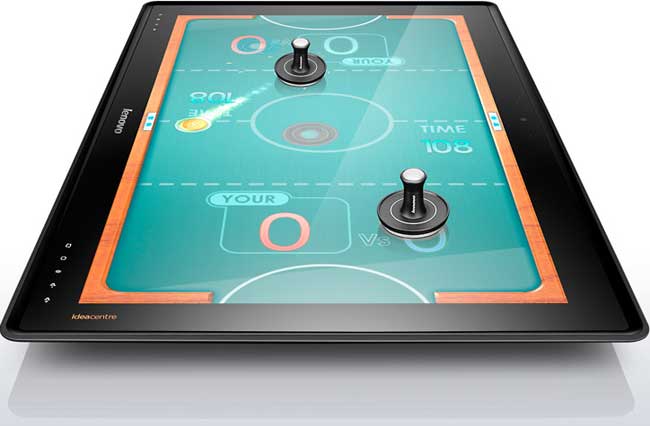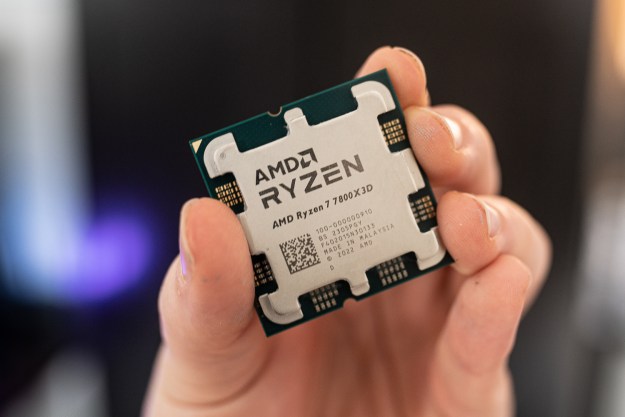
Check out our review of the Lenovo IdeaCentre Horizon all-in-one table PC.
Lenovo’s half-tablet, half-table PC blew our minds when we first saw it at CES in January, so much so that we named it one of the best computing products at the show. It’s an all-in-one, but it’s also a home gaming hub for family game night, and, appropriately enough, comes bundled with two specialty joysticks, two strikers, and one eDice. For more practical uses, the Horizon also includes a wireless keyboard and mouse. This unique machine is available today online starting at $1,699.
This 27-inch touchscreen PC may be mounted on a wall or laid flat on a table and its uses change accordingly. Though it’s only an inch thin, this table PC weighs around 17 pounds, so it’s quite a bit heftier than a regular laptop or a Scrabble board. But here’s the thing – it’s much more than just a computer or a board game emulator. Lenovo’s goal with the Horizon was to create a family computer that up to four family members at a time can use to interact with each other. To that end, the Horizon comes with several multiplayer games, including Monopoly, Draw Race 2, Raiding Company, Air Hockey (demonstrated in this video), and Texas Hold ‘Em. Even more games are available for download through Lenovo’s app store.
There’s also software called Aura included that allows multiple users to flip through different photos, videos, and music at the same time. Since the Horizon is designed to be used around a table, there’s a helpful button to easily flip the display 180 degrees.
On the tech side, the Horizon’s 1920 x 1080 full HD display is optimized for 10-finger touch. The base model is powered by an Intel Core i5 processor, an Nvidia GeForce GT620M graphics card with 2GB of memory, 8GB of RAM, and a 1 TB hard drive. There’s a 720p HD camera and a stand for the Horizon included as well. Lenovo plans on offering a model with a Core i7 processor for even more power in the near future.
The Horizon is available via Lenovo’s website and will hit shelves in June. What do you think of the Lenovo IdeaCentre Horizon? Is it an awesome new computing paradigm or just a cool tablet PC with limited usefulness? Stay tuned for our full review!


